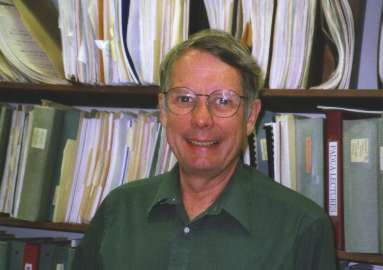
Office: 274 Interdisciplinary Sciences
Current research interests of William Mathews involve theoretical problems related to gas dynamics or radiative transfer in low-density astrophysical environments. In particular, he has studied the large-scale gas motions in galaxies and emission line regions in quasars and active galaxies.
The ultimate fate of gas expelled by evolving stars in elliptical galaxies is a continuing source of intriguing theoretical challenges. In recent years, Mathews has shown that gas ejected from stars in ellipticals is heated to high temperatures after dissipational interactions, accounting for the X-ray emissions observed. As these galaxies evolve, either galactic winds or cooling flows can result, depending on the supernova rate. However, the iron abundance in the hot interstellar medium of massive ellipticals may exceed that observed unless the supernova rate is small enough to result in galactic cooling flows.
Mathews has also participated in several related studies: the dramatic consequences of a modest galactic rotation on cooling flows in elliptical galaxies; the evolution of dust particles contained in stellar ejecta and its relevance to the far-infrared emission from elliptical galaxies; and comprehensive models for the stellar evolution and unstable galactic winds associated with starburst galaxies.
On much smaller spatial scales, Mathews continues to investigate the physical nature of line-emitting regions in the cores of quasars and active galaxies. The extremely rapid motion of this gas and the enormously high radiation densities give rise to a variety of new physical problems in radiative gas dynamics: hydrodynamic instabilities driven by radiation forces, dynamically appropriate motions for the line-emitting regions in the vicinity of massive black holes, and scattering of light from hidden quasars by highly ionized plasma ejected from the central regions, among others.